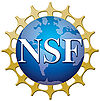SEISM
Software Environment for Integrated Seismic Modeling (SEISM)
Contents
Project Leadership
- PI: Thomas H. Jordan University of Southern California
- co-PI: Jacobo Bielak Carnegie Mellon University
- co-PI: Yifeng Cui University of California, San Diego
- co-PI: Kim B. Olsen San Diego State University
NSF Project Details
Project Dates
- Start Date: 1 August 2012
- End Date: 31 July 2015
Project Calls
Bi-weekly coordination calls on 2nd and 4th Thursdays from 11am-noon PT
- Calendar Date - Coordination Leader - Coordination Topic
- 24-Jan-13 - Ricardo Taborda - NSF SI2 Meeting
- 14-Feb-13 - Yifeng Cui - SCEC SDSC Cloud Data Storage
- 28-Feb-13 - Jacobo Bielak - Experience using Blue Waters
- 14-Mar-13 - Tom Jordan - Attenuation Models for High-F Simulations
- 28-Mar-13
- 11-Apr-13
- 25-Apr-13 - Philip Maechling - Software licensing for SCEC SEISM software
- 9-May-13
- 23-May-13 - Kim Olsen - Including plasticity effects in AWP-ODC
- 13-Jun-13
- 27-Jun-13
SI2 PI Meeting Jan 2013
Project Overview
Recent destructive earthquakes have highlighted deficiencies in the empirical probabilistic seismic hazard analysis (PSHA). NSF-supported research by the Southern California Earthquake Center (SCEC) has developed computational pathways for improving PSHA by physics-based earthquake simulation. We are working on integrating high- and middle-level scientific software elements (SSEs) developed by SCEC into a Software Environment for Integrated Seismic Modeling (SEISM) that will be sustained as a software ecosystem for physics-based seismic hazard analysis in the United States and elsewhere. The SEISM software framework in development and funded by NSF’s SI2 program includes high-level SSEs for composing and managing unified community velocity models, SSEs for dynamic and pseudo-dynamic earthquake rupture generation, stochastic and deterministic ground motion simulation engines, and SSEs necessary to employ forward simulations in two types of inverse problems: seismic source imaging and full-3D tomography.
The SEISM framework is being developed, tested, and utilized by an interdisciplinary Cyber Science and Engineering (CS&E) team that comprises geoscientists, computer scientists, and earthquake engineers. The SEISM SSEs are being improved to be sustainable tools that include proper documentation with periodic software releases and provide users with sample models formulation, and verification and validation tests to facilitate the incorporation of better theory and data. SEISM SSEs include three major computational platforms. One, the UCVM platform will provide a framework for managing sets of seismic velocity models needed for earthquake simulations. Two, the Broadband platform will be a user-friendly interface for calculating modest suites of seismograms (< 104); it will combine deterministic methods at low-frequencies with stochastic methods that can extend seismogram synthesis above 10 Hz. Three, the CyberShake platform will use seismic reciprocity to efficiently generate the very large (> 106) suites of simulations needed for physics-based PSHA. These computational platforms will support ground motion simulation validation processes designed to move computations upward in a hierarchy that ranges from exploratory scientific research, through tested models for engineering application, to hazard products qualified for guiding urban planning, seismic design provisions in building codes, performance-based earthquake engineering, and disaster planning. These high-level SSEs of SEISM will support the use of petascale (and eventually exascale) computers by earthquake scientists, engineers, and risk managers to create a wide variety of simulation-based hazard products.
To accomplish this, we have defined a set of milestones that include the deterministic and stochastic simulation of recent earthquakes across the seismic frequency band 0-10 Hz using the Broadband platform, and testing these simulations against recorded seismograms; the production of a urban seismic hazard model for the Los Angeles region using the CyberShake platform; and the development of a time-dependent California seismic hazard model that will be driven by the time-dependent UCERF3 earthquake rupture forecast. Simultaneously, we have started the SCEC High-F project, which is designed to promote and advance deterministic earthquake systems simulation at high-frequencies (> 2 Hz). The High-F provides an avenue for interconnecting data and results from the different SEISM platforms into a common activity, and lays out ambitious scientific and computational goals which drive the scientific and software developments of SEISM’s sustainable software infrastructure.
